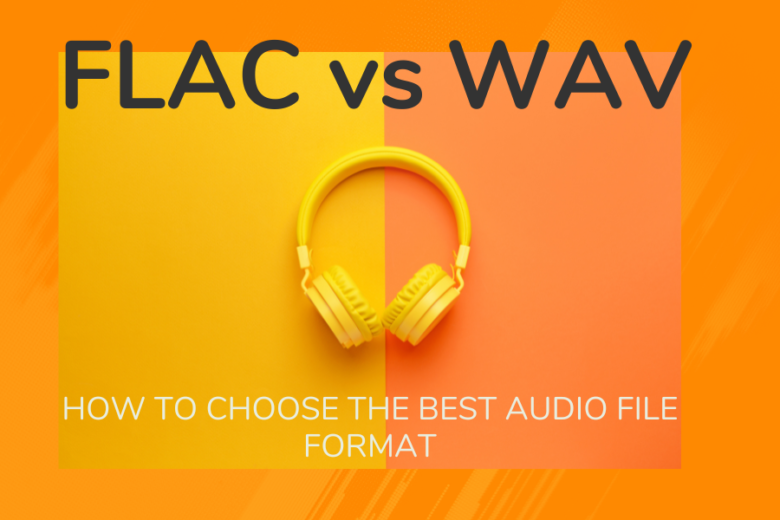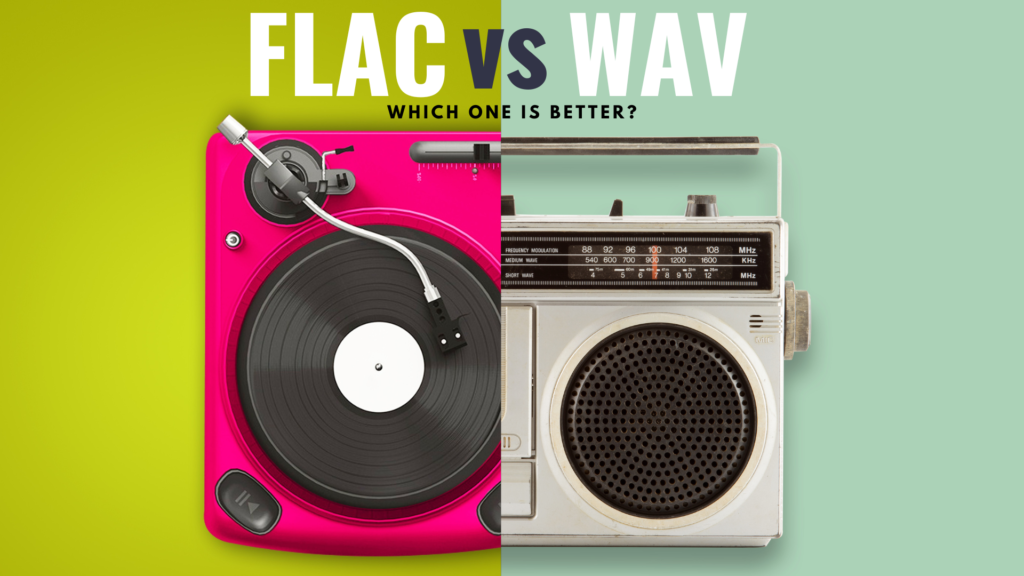FLAC vs. WAV: How to Choose the Best Audio File Format
Quality audio is the key to preserving everything from those golden family moments to home movie productions. Anyone who has ever worked with audio files knows there are FLAC and WAV formats. Deciding which format to keep your audio files in will determine how well-preserved your files are.
Even if you have a rudimentary knowledge of different file formats, comparing FLAC vs. WAV is crucial to getting the most out of your archives.
Here’s what you need to know about WAV vs. FLAC.
What is FLAC?
FLAC is an abbreviation of Free Lossless Audio Codec. The term “lossless” means that you can compress other file formats into FLAC. People do this to store audio files on their computers without taking up unnecessary space. Practically you can compress all audio file formats, but FLAC lets you do it without degrading the original sound quality
FLAC is a format released in 2001 by the Xiph.Org Foundation, and it has since grown to become one of the go-to audio file formats on the play. It was brought into being with the vision of reducing audio file sizes, which at the time took up immense amounts of space.
Using FLAC meant you could compress audio files to 60% of their original size without losing any original quality. FLAC was a game changer in an era where computer storage space came at a premium.
One of the factors in deciding between FLAC or WAV is that FLAC is a far more versatile and flexible file format. It’s also completely free to use, and the code is open-source, meaning technical whizzes are free to manipulate the code however they please.
Today, FLAC is compatible with practically all modern music players. You should have no problems playing a FLAC file regardless of your computer, smartphone, or tablet.
So, is FLAC better than WAV? It largely depends on what you want to get out of your audio files. FLAC is far from perfect with issues relating to compatibility with some devices, sample rates, and bit-depth.
You can typically do this without much technical knowledge if you want to convert your WAV file into a FLAC file.
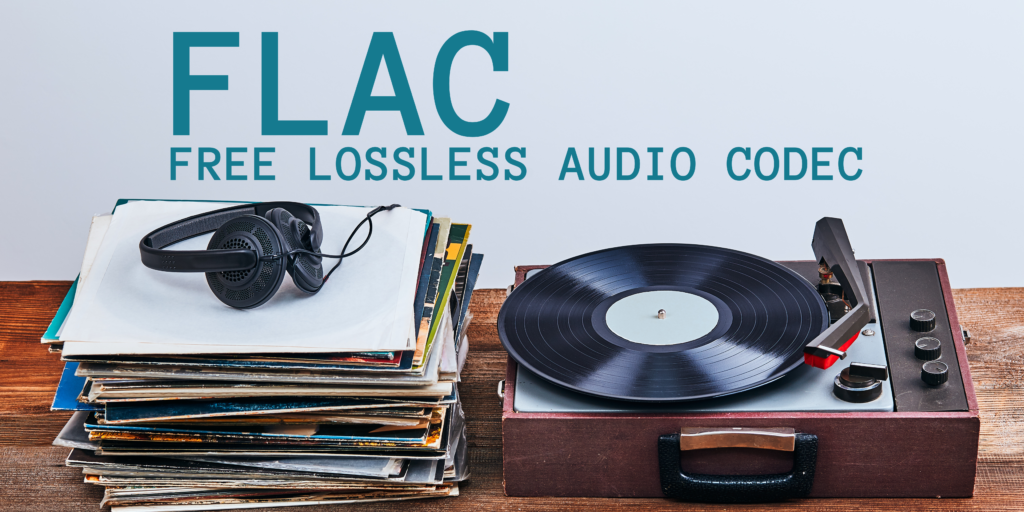
Pros of FLAC Files
- Sound Quality – FLAC files are lossless, meaning they retain all of the quality of the original recording. There’s no sound degradation, allowing you to listen to your clips as they were designed to be listened to.
- Smaller Size – Uncompressed sound files can take up immense space. FLAC audio files can be reduced by anything from 50% to 70% without sacrificing quality.
- Easier to Send – Due to their small size, FLAC files are much easier and faster to transfer to friends and family via cloud-based applications and even email.
- Works Everywhere – There are almost no devices that FLAC files will not play on. You don’t need particular codecs or applications to play these files on your device.
- Free – FLAC has become synonymous with digital audio files because it’s a totally free file format. You don’t need to purchase or subscribe to any providers to use them.
Cons of FLAC Files
- Limited Bit-Depth/Sample Rates – FLAC files limit bit-depth and sample rates. In short, limiting these metrics means that you won’t get unrivaled, professional-quality sound. However, the average person is unlikely to notice much of a difference.
- Compatibility Issues – Despite FLAC working on most devices, there are still some devices you may have trouble playing them on. In this case, you’ll need to take advantage of a file converter.
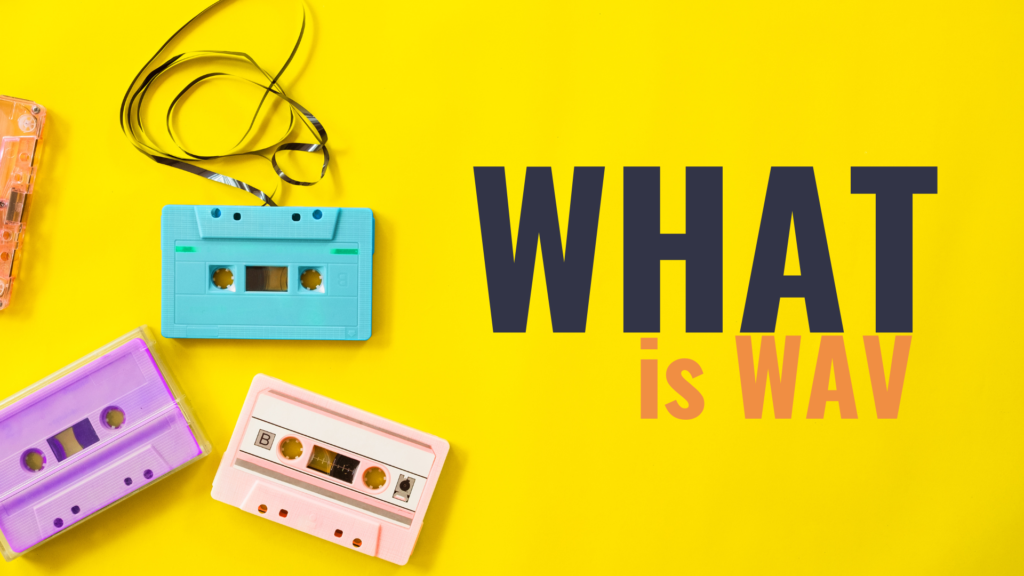
What is WAV?
So, should you choose WAV or FLAC for your audio archives or your next audio project? Is the FLAC or WAV better at getting the job done? To make the right choice, you also need to know about the qualities and drawbacks of WAV.
WAV stands for Waveform Audio File Format and may appear with the file extensions .wav or .wave. Sometimes, you may hear this file format referred to as WAVE.
WAV was developed through the partnership of the computer giant Microsoft and IBM. Its original purpose was to store audio bitstreams on PCs running the Windows operating system. Since its release in 1991, WAV has been the leading audio format for storing uncompressed audio clips. Fun fact: it’s also the format used on CDs.
Is WAV lossless like FLAC? WAV also enjoys the lossless characteristic, despite the format’s age. In other words, you can continue to enjoy epic sound quality if you choose WAV for sound output.
Note that WAV files are uncompressed, so they will always be much bigger than FLAC files. So, is WAV better than FLAC despite this? It depends on what you prioritize in your files. Too many WAV files could become a problem if you’re struggling for space on your hard drive.
Its uncompressed form means that WAV enjoys a higher sample and bitrate. There are no limitations on bit-depth, so from a technical standing, WAV wins regarding quality.
The downside of WAV is that it’s not open-source. The technology is wholly owned by IBM and Microsoft, thus preventing the public from legally manipulating and changing the code to suit them. It also means any innovations rely on these two corporate giants.
There are no compatibility issues with WAV — these files can play on any device and also play nice with software old and new. Even though compatibility is rarely an issue with FLAC, WAV is the best option for avoiding unexpected compatibility problems if you’re working with lesser-known operating systems or software.
Pros of WAV Files
- Sound Quality – WAV files are superior when it comes to quality levels because this is a type of uncompressed file. Nothing is lost because it hasn’t gone through any form of compression. Your files are still practically original.
- Unlimited Bit-Depth/Sample Rates – These two categories have zero limitations, so the FLAC and WV (WAV quality) debate is clearly dominated by the latter.
- Universal Compatibility – You are unlikely to encounter compatibility issues using a WAV file.
- Easy to Work With – Anyone initiating a new audio project will enjoy how easy it is to work with WAV files.
There are no compatibility issues with WAV — these files can play on any device and also play nice with software old and new. Even though compatibility is rarely an issue with FLAC, WAV is the best option for avoiding unexpected compatibility problems if you’re working with lesser-known operating systems or software.
Cons of WAV Files
- Not Open-Source You cannot manipulate the WAV file format. It gives audio technicians less flexibility in getting what they want from this audio file type.
- Big File Sizes – The uncompressed nature of WAV files means these are considerably larger than FLAC files. If you’re lacking space, WAV files could present an issue. Typically, a single WAV file will be more than double the size of a FLAC file.
FLAC vs. WAV: Which One is Better?
So, should you choose WAV or FLAC for your audio archives or your next audio project? Is the FLAC or WAV better at getting the job done? To make the right choice, you also need to know about the qualities and drawbacks of WAV.
Is WAV or FLAC better based on the above?
This debate has no undisputed winner because each performs better in different areas. You need to decide what you want to do with your audio files and which format suits your purposes.
Luckily, you can convert both file formats and switch from one to the other if necessary.
Let’s run through some essential FLAC vs. WAV points to decide when you might want to use each format.
Lossy or Lossless?
A lossy audio file type is one that will lose quality when either compressed or converted. As mentioned above, WAV and FLAC files are classified as lossless, thus allowing them to be compressed and converted while experiencing a negligible loss in sound quality.
If you need to compress for sending to someone else or convert between one or the other, there’s no need to worry about losing anything.
Compressed vs. Uncompressed Files
The most significant difference in FLAC vs. WAV is that the former is compressed, and the latter is uncompressed. FLAC is a compressed file, whereas WAV is technically a perfect copy of the original audio file.
People often favor FLAC because it takes up significantly less space on their devices. FLAC files can be up to 70% smaller than the same WAV file. Unless you’re a music professional, you won’t notice any discernible difference in sound quality when opting for FLAC over WAV.
If storage space is your main concern, FLAC is the clear winner in this category. It’s also why people on smartphones and tablets will select FLAC as their file format because they don’t have as much space to play with as someone using a desktop computer.
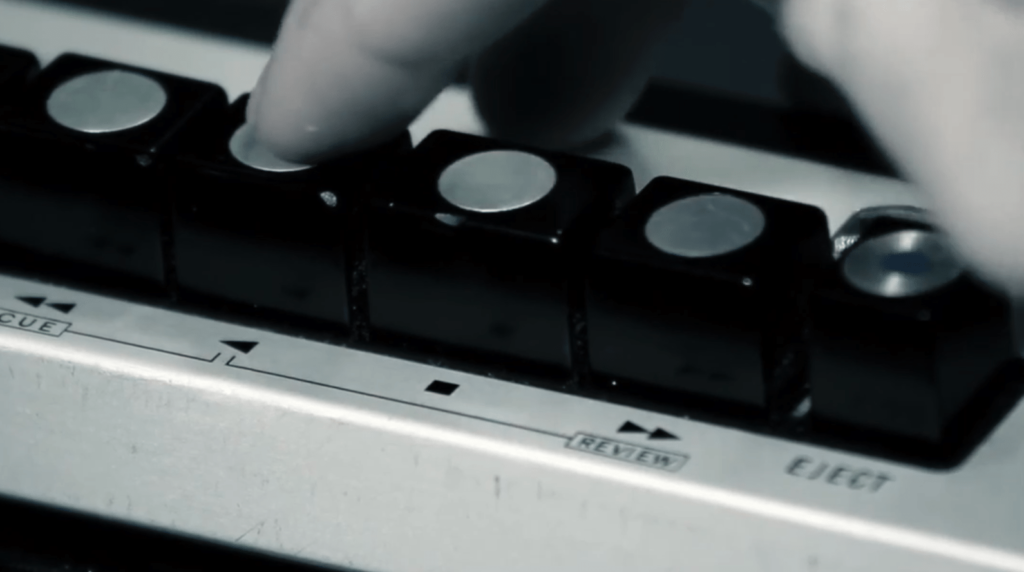
Sample Rate and Bit-Depth
An audio file’s sample rate and bit-depth tell you how accurately a sound has been recorded in the digital space. The technicalities of both these concepts are typically above the heads of the average layperson. However, you need to understand that the higher the bit-depth and sample rate, the higher the audio quality.
Sample rates are always expressed in kilohertz or hertz, whereas bit-depth is defined in the number of bits.
So, what is the sample rate?
The sample rate is how many times rendering software can sample an audio file per second. For example, if you have a file with a sample rate of 196kHz, your audio rendering software can sample the file 196,000 times in a single second.
If we look at bit-depth, you may have a high bit-depth of 32 bits. This is the amount of information your rendering software draws on while sampling the file in question. The higher the number, the more information your software has to work with.
You already know that FLAC has limits on its sampling rates and bit-depth, whereas WAV has no such restrictions. What does this mean in the context of the quality of your audio files?
WAV is uncompressed and so retains everything regarding sample rates and bit-depth. That’s also why it takes up more space than a FLAC file. Is WAV better than FLAC for this reason? Not necessarily. While FLAC will lose specific details throughout the compression process, it is still lossless. There is no substantial quality loss in FLAC files.
Free and Open-Source
FLAC is an open-source file format, whereas WAV is not. FLAC is an entirely free file format and may be modified by anyone. If you’re working on a brand-new audio project and need to make some changes, FLAC is the format that will allow you to customize your experience however you please.
Unfortunately, WAV has been patented by Microsoft. Only the tech giant can change the file format, including applying the latest innovations.
Does this matter to the majority of people? Not at all. Unless you’re performing a highly technical function, the fact that one is open-source and the other isn’t likely won’t figure into your thinking. If you want to manipulate aspects of the file format, just convert your WAV file to FLAC, and you’re good to go.
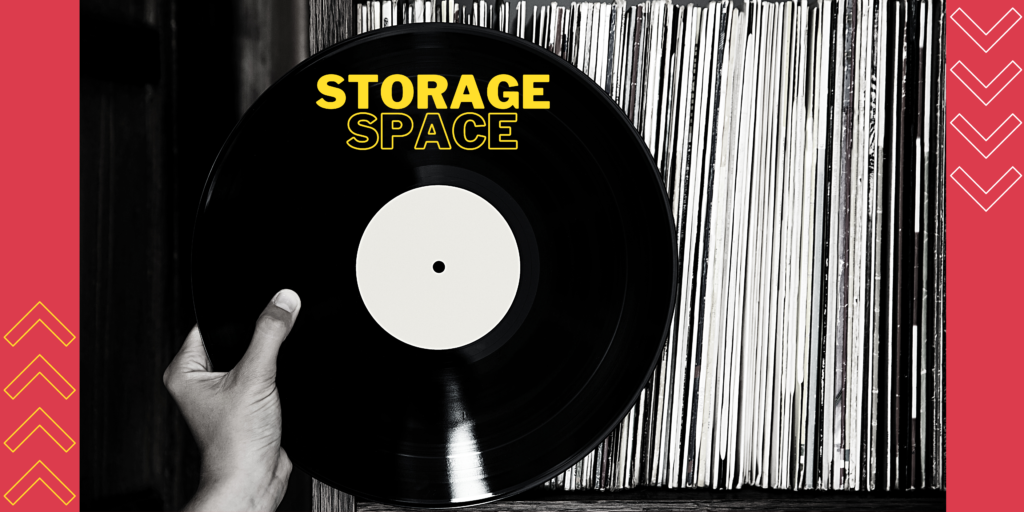
Storage Space
Typically, storage space is the most critical facet in deciding which file format is better. People with many audio files may worry about how much space their archives take up on their computers.
As the compressed file format, FLAC wins this battle hands down. WAV is uncompressed and will take up significantly more space on your device. It will also take longer to transfer to other devices and download. If the speed of transmission matters to you, FLAC is the best file format to use.
File Conversion
FLAC and WAV are two file formats that can be converted quickly enough. Conversion can go both ways, from FLAC to WAV and WAV to FLAC.
Since both file formats are lossless, you will not lose anything by converting from one format to another. Saving large numbers of family movies on an external hard drive no longer means needing to accept any degradation when converting to FLAC for better storage.
How do you convert these files from one to the other?
Both files are simple enough to convert. There are plenty of free software options that will automatically convert your files. File conversion involves selecting your file and deciding which format you want to convert it to. Click the button, wait a few minutes, and your file will have been converted.
Note that file corruption is a possibility. Just to be safe, try maintaining a copy of each file in both formats in case something goes wrong.
Measuring Sound Quality Against Other Audio Files
Using a FLAC or WAV format will make a difference in sound quality compared to other files, although often only true audiophiles will appreciate the difference vs. a standard MP3 file. There is little difference in the sound quality of FLAC or WAV.
Special Equipment
HD audio from a FLAC or WAV file requires no special equipment or software to play. Your computer’s default media player will be able to handle both types of files without the need for any special downloads.
Remember, you must invest in the right sound equipment to get the best sound quality. A great pair of headphones will enable you to hear every sound in crystal-clear quality.
Are WAV and FLAC the Best Audio File Formats?
FLAC and WAV are considered to be among the gold standard file formats for audio files (truly advanced users may also experiment with WMA, MQA and DSD). There are numerous file formats available for you to use. Getting the best quality from your audio means selecting the proper format to improve and retain impeccable sound quality.
When it comes to digitizing old audio, for many of our clients going straight to MP3 is the best answer due to ease of use – and the fact that the original recordings were of modest quality to begin with. For our more advanced users, we default to high quality WAV files because there is no downside, they are lossless, and there is an almost zero change of playability issues.
But for advanced users, FLAC is can be a very elegant answer that checks many boxes. If you have the comfort to try out new file formats, we highly recommend giving it a try. But if you are a more casual user just looking to get the best our of your older analog audio, the safest path is capturing to a set of WAV files, and then requesting a secondary export of MP3 files for easy sharing with loved ones.
Enjoy Your Memories Again with EverPresent
Sound quality makes all the difference in a piece of audio or a video. Storing your precious archives means choosing the correct file format. EverPresent offers digital conversion services for all video and audio files, including reel-to-reel cassettes and vinyl records.
Our team specializes in helping everyone convert those precious family moments into a digital format. We also get outstanding sound quality from all audio file formats, meaning nothing is compromised during the conversion process. Store your memories for future generations and ensure nothing is lost from your family’s unique story.
To learn more about EverPresent audio transfer services, get in touch now.

